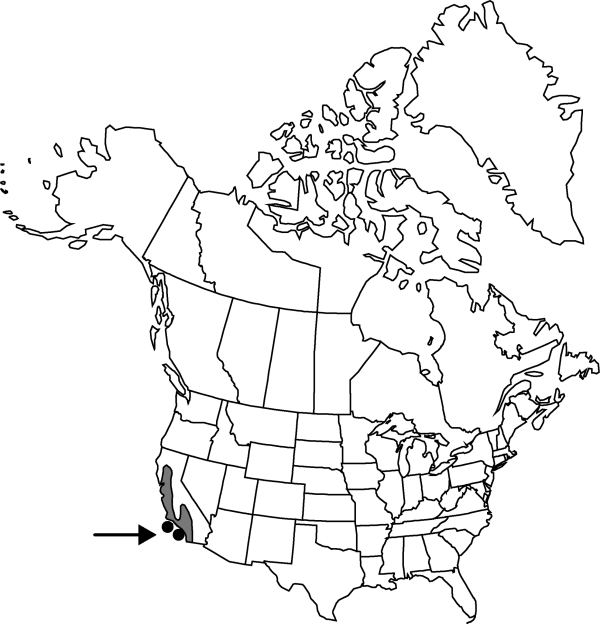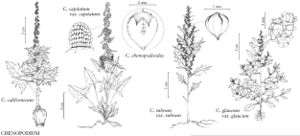Difference between revisions of "Chenopodium californicum"
in W. H. Brewer et al., Bo t. California 2: 48. 1880.
FNA>Volume Importer |
FNA>Volume Importer |
(No difference)
| |
Revision as of 20:01, 24 September 2019
Stems erect to ascending, branched at apex of taproot, 2.5–8 dm, somewhat viscid and farinose. Leaves nonaromatic; petiole 1–12 cm; blade triangular, 4.5–10 × 3–9 cm, base truncate to cordate, margins sinuate-dentate, apex acute to acuminate, sparsely farinose. Inflorescences: dense glomerules sessile on terminal spikes; spikes 5–19 cm; glomerules 3–5 mm diam., flowers developing at about same time; bracts leaflike, subtending lower glomerules, absent for over 1/2 inflorescence, triangular, broadly hastate, 1–3.5 × 0.8–4 cm, apex acuminate, base truncate to hastate, sparsely farinose. Flowers: perianth segments connate into 0.5–0.9 mm tube, lobes oblong or elliptic, 0.6–0.9(–1.1) × 0.4–1.2 mm, apex obtuse, rounded or truncate, scarcely abaxially keeled throughout, glabrous, not covering fruit at maturity; stamens (4–)5; stigmas 2. Achenes obovoid; pericarp adherent, ± smooth. Seeds obovoid or rotund, 1.5–2 mm in diam., margins rounded; seed coat black, rugose.
Phenology: Fruiting spring–fall (winter).
Habitat: Dry to moist slopes, ledges, plains, yellow-pine forests, yucca-juniper woodlands, chaparral and under oaks and willows
Elevation: 30-1500 m
Distribution

Calif., Mexico (Baja California).
Discussion
Selected References
None.
